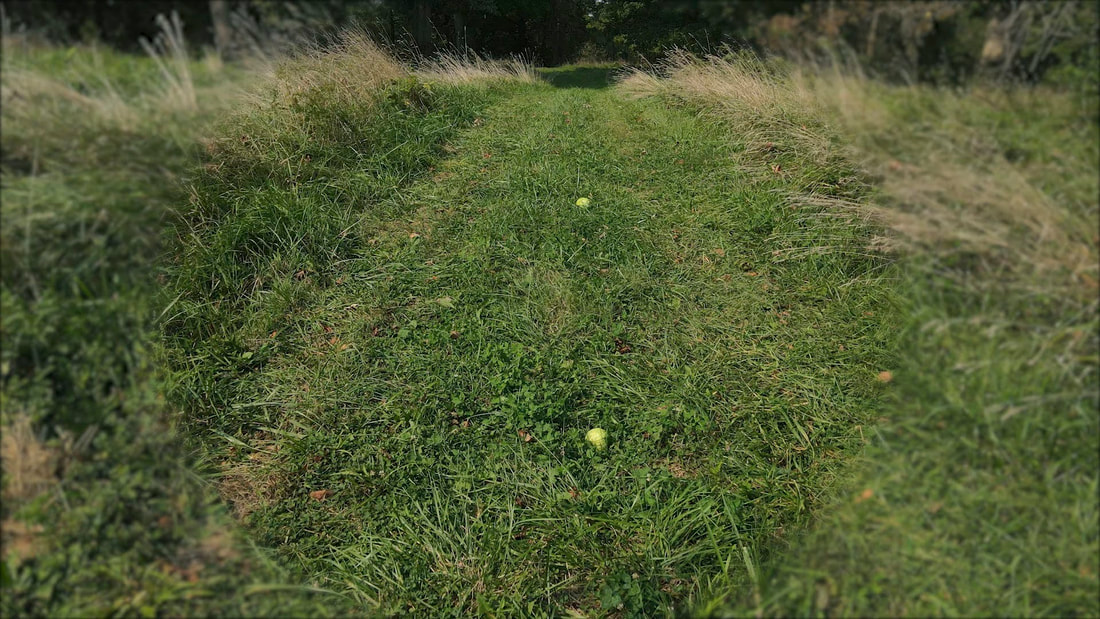This Land is Not My Land is a site-specific installation that uses 45 fruits from the Osage Orange tree to create a metaphorical fence line on private property owned and stewarded by the artists’ neighbors. A fruit is placed every eight feet, as is customary with establishing fence posts, and the work is experienced through walking. The fruits sit in the middle of a mowed path and as a viewer walks the 350 ft curved line, only a few fruits are simultaneously visible. This installation takes place on my neighbor’s land, which they generously invited us to enjoy. In daily meditative walks through this former cow pasture, on land historically inhabited primarily by the Kickapoo and Peoria, my attention is drawn to the multiple mature Osage Orange trees.
The Osage Orange tree produces strong wood and has historically been used by regional indigenous peoples for bowmaking. Settler-colonialists used it to build wagon wheels and later, for containing livestock. The thorny and gnarly branches made for excellent livestock barriers and the tree inspired the design of barbed wire, a containment material used extensively in the prison-industrial, war, and industrial livestock complexes. I think of the fraught settler-colonialist history of land use, livestock, and private property, of how I am complicit in this history and how, as someone who engages with livestock that requires private property and uses natural resources, the issues surrounding these animals unintentionally perpetuate a potentially painful history.
The Osage Orange tree produces strong wood and has historically been used by regional indigenous peoples for bowmaking. Settler-colonialists used it to build wagon wheels and later, for containing livestock. The thorny and gnarly branches made for excellent livestock barriers and the tree inspired the design of barbed wire, a containment material used extensively in the prison-industrial, war, and industrial livestock complexes. I think of the fraught settler-colonialist history of land use, livestock, and private property, of how I am complicit in this history and how, as someone who engages with livestock that requires private property and uses natural resources, the issues surrounding these animals unintentionally perpetuate a potentially painful history.



